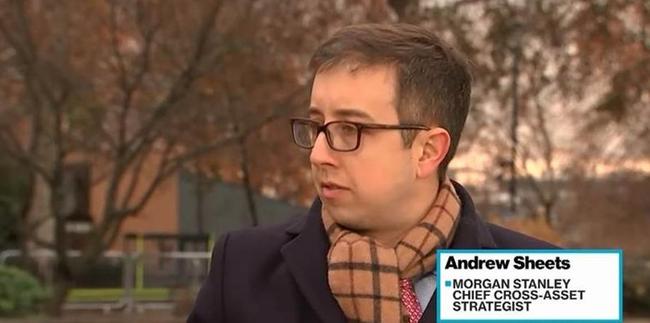Morgan Stanley: "The Biggest Debate About 2021 Isn't Where The Market Is Going. It's How It Gets There" Tyler Durden Sun, 12/06/2020 - 18:15
By Andrew Sheets, chief cross-asset strategist at Morgan Stanley
The biggest debate about 2021 probably isn’t where the market is going. It’s how it gets there.
We, and many others, are optimistic on the next 12 months. But there’s less agreement among investors on how these gains will be achieved. With our economists still in the 'V-shaped recovery' camp, we think returns will be powered by strong economic growth, driving an early-cycle, post-recession pattern of returns. Buy what you’re usually supposed to buy following a recession.
Others disagree. They think our forecasts for economic growth are too optimistic and expect COVID-19 to take longer to dissipate, with a more serious, longer-lasting impact on the global economy. They argue that the drawdown and recovery happened so fast that the economic cycle never truly reset, leaving both the corporate and sovereign sectors overleveraged. For these investors, liquidity and low rates will be the principal drivers of market gains. Secular stagnation lives.
In investing, as in life, more than one thing can be true at the same time. Morgan Stanley’s economists forecast both above-consensus global growth and US$3.4 trillion of G4 balance sheet expansion in 2021. We’re positive on the year ahead in part because we think that growth and monetary policy will be rowing in the same direction.
Our argument is simply that weak-but-improving growth and supportive liquidity are a normal post-recession backdrop. Meanwhile, market pricing often remains sceptical that economic 'normalcy' will return any time soon. Better growth, supportive liquidity and attractive valuations are all reasons to adopt a 'pro-cyclical' stance across key cross-asset pairs: Long US small-caps over large-caps, long AUD/NZD/SEK/NOK versus USD and long high yield over investment grade. We think that US 10-year rates will hit 1.45% by end-2021, and are underweight government bonds.
But what about that missing reset? The economic collapse and recovery were unusually fast, bypassing the large defaults of 2008-10. There hasn’t been a single significant bank failure in the wake of the world's largest economic drawdown on record and, more strikingly, there hasn’t been a single significant capital raising. The US trailing 12-month speculative-grade default rate sits at 8.0%. In 2009, a milder recession, it peaked at 14.2%.
This failure to reset is often cited as a key reason why this can’t be the start of a new economic cycle: Recessions, while painful, help to clear out weaker, less-productive and undercapitalised businesses, making room for stronger, more dynamic ones to prosper in their place. The historic levels of policy intervention in 2020 prevented this 'creative destruction'. Without that clearing out, a dynamic recovery is unlikely. With it, a wider run of corporate defaults is inevitable.
Since we do think this is the start of a new economic cycle, do believe it will be ‘dynamic’ (we’re above consensus on growth) and don’t expect a surprisingly high wave of defaults, this would be a good time to explain why we don’t subscribe to the counter-argument.
* First, recessions are about more than just high default rates. They also often mean high unemployment, low inventory levels, high savings rates and low consumer confidence (among other things). Early-cycle environments gain momentum from all these negatives becoming 'less bad'. In our forecasts, over the next 12 months, all of them do.
* Second, about those default rates. Pruning unproductive businesses from the market is a painful but necessary process. But this argument assumes that the businesses in question are fundamentally broken, not 'fine were it not for a once-in-a-century global pandemic'. We don’t see how letting scores of otherwise solvent firms default would result in a better long-run result for the economy or investors, especially as these firms would have been forced to reorganise, or liquidate, near the nadir of economic activity.
Indeed, one of the great ironies of 2020 is that for all the hand-wringing around 'covenant-lite' lending, it was probably a blessing. 'Weak' terms on lending gave borrowers a helpful level of flexibility during the 1H downturn, where strict provisions would have forced more defaults. Neither owner, employee nor lender would have benefited from debt suddenly coming due in the depths of a recession; if you don’t believe me, search 'recovery rates March 2009'.
Finally, it’s also unfair to say that policy prevented any pain from being endured. If we combine the trailing 12-month default rate (8.0%) with our credit strategists' forecast for the next 12 months (6.0%), we get a 24-month default rate of ~14.0%. We can compare that two-year default rate to two-year changes in economic activity (i.e., taking a somewhat broader view of this unusual year). Viewed this way, things look more normal.
If you're constructive on the year ahead, the question of ‘how you get there’ still matters. We remain in the pro-cyclical, early-cycle camp, and don't believe that the 'absence' of a larger corporate default wave nullifies this story. Our corporate and securitized credit strategists are constructive with an early-cycle bias: positive on junior exposure in CLOs and CMBS, and on high yield over investment grade.
http://dlvr.it/Rn6pCM

No comments:
Post a Comment